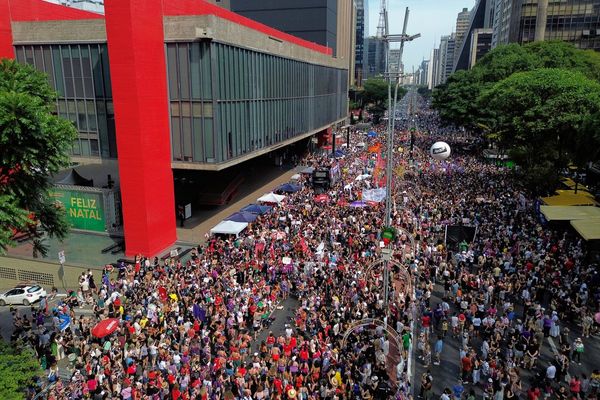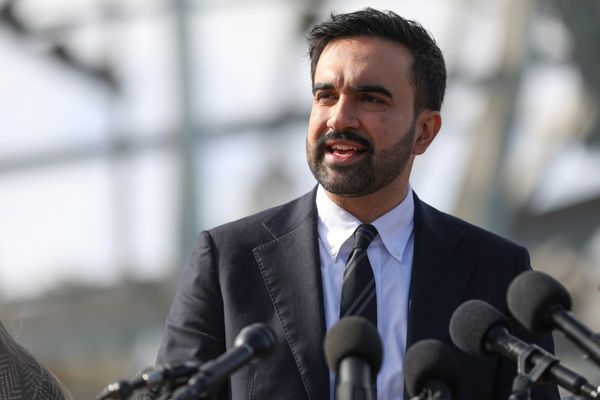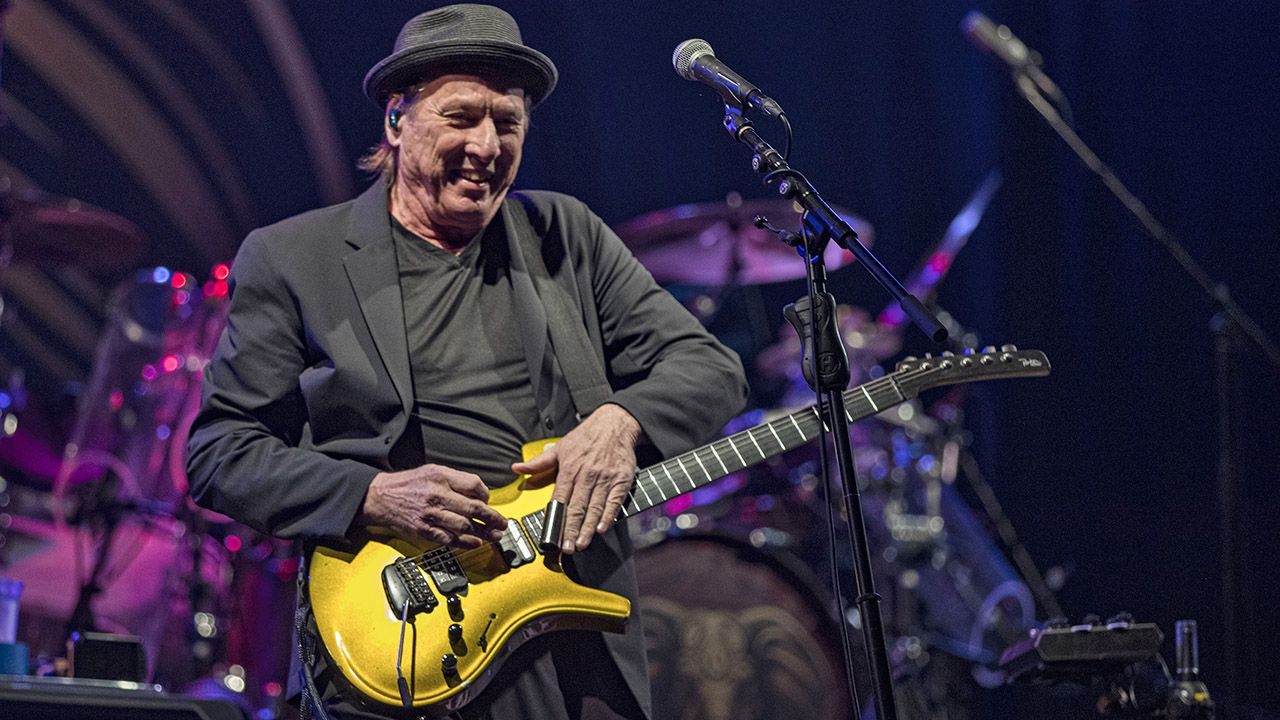
Now the hysteria surrounding King Crimson offshoot Beat is dying down, Adrian Belew knows what’s next. “I want to get back to angry guitar and also fretless guitar,” he says.
It couldn’t be a better time for the Zappa, Bowie, and Fripp alum to revisit those styles – he’s just had carpal tunnel surgery and reports he’s recovering well. “The speed I’m playing at is as good as ever,” he says of his left hand’s progress.
“With some things, I had to practice hard to get back up to speed,” he explains. “The thing about being older is keeping yourself in shape and keeping yourself creative. I’ll keep making new records – making music is the most important thing to me. The performance is just the second half.”
What’s the prognosis for your left hand?
“It was an easy recovery and an easy operation; no problem at all. While recovering you can’t do much with it and it’s a little tender. Then you finally work back up to tempo. I’m playing as I always did – except there’s no more pain.”
What exactly had been going on?
“My hand started getting numb, and during part of the Beat tour it would stay numb from the moment I woke up until sometime during soundcheck. It was a little scary. I’d be like, ‘You better wake up soon here, hand!’”
Was there a moment you feared that you might not play again, or it might impact your playing forever?
“Yes – but also, not really. Steve Vai was able to walk me through the process since he’s had it done twice. He assured me it was a simple operation and it wasn’t going to go wrong. And he introduced me to one of the best surgeons in the US.
“Dr Azari is so good at what he does. He was one of the first surgeons who did a hand transplant successfully. So, carpal tunnel, for him, is like changing strings! I was actually going to ask him to put on a second left arm, to see what I could do with three hands on the guitar!”
Have you needed to circumvent the impact of age on your playing?
“The truth is I’ve never worked on the basis of notes, speeds, scales, and all that stuff. The physical aspect of it was never as important to me as the mental aspect. I imagined making the guitar do more than just what it does.
“A lot of guitar players just want to be like their heroes; but as you get older that gets harder and harder. But I can still get the sounds I’ve always gotten, so it’s not harder – there’s just more of them!”
You and Steve Vai both have histories with Fank Zappa. Has that helped you forge a working relationship together?
“The year I spent with Frank was the first and only time I’ve ever had serious instruction. Frank was a great teacher and very generous to me. He taught me a lot of things about music and the business of music. It wasn’t just how to play odd time signatures or do wild stuff, but how to behave and have a life as a professional. All those things were unknown to me.
“Steve and I agree that when you go through what Frank teaches you, you come out as a high-quality professional. You know you’ve got to play things consistently and correctly and that you can’t mess around. The main thing Frank wanted from you was to show up at every gig in perfect shape and do the music correctly.”
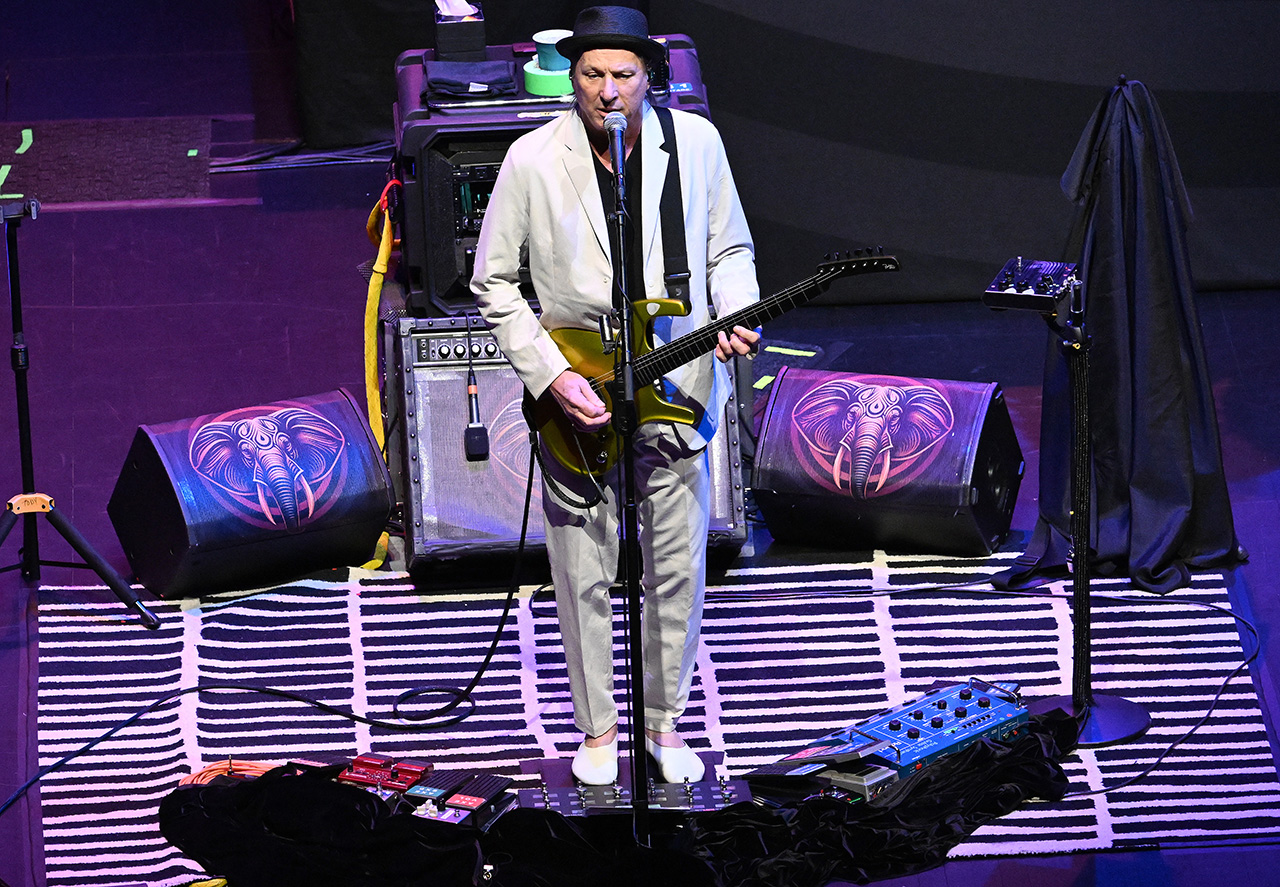
Without that Zappa training, could you have handled working with David Bowie thereafter?
“It would have been harder to some degree, but I think that music could have been done. But then you move forward a year or two, and I’m in King Crimson, where it’s all about playing in one time signature, and singing in another.
“I would have had a much more difficult time with that if I hadn’t worked with Frank. By the time I came out of that I was very comfortable with odd time signatures – I could write in seven, five, nine, or whatever was required. I understood it from a different basis than some people might have.”
I always wanted to express sounds with the guitar, more than just knowing how to play the notes
What was Frank’s explanation of odd time signatures?
“It was that you felt the accents. If it’s a seven, that’s what you’re feeling. You’re not counting seven – that would be ridiculous. I’d been a drummer since I was 10, so once I understood that it rang a bell: ‘All I have to do is learn what those accents are, and then I can play in 15.’ I’ve been doing it ever since. Without Frank I would have just been guessing.”
Did that idiosyncratic thinking makes you appealing to Talking Heads?
“Absolutely. They needed someone to throw a lot of color on the painting, and someone who could break loose and do wild soloing. Those things were the perfect additions to their music, but they couldn’t do them. They were really nice to me; they loved what I did and were very supportive.”
Have you ever wondered how an off-the-beaten-track player like you keeps finding himself at the center of pop culture moments?
“I don’t know… You think of people like David Bowie, innovators, and I think I belong in that club. I certainly don’t belong in the club that's doing sessions every day, or the club that’s shredding, or any other club!
“But club I do belong to is the one where you do interesting things that no one else has done. As I said, I always wanted to express sounds with the guitar, more than just knowing how to play the notes. I guess that's how I’ve moved from one thing to another so quickly.”
What are some of your favorite off-kilter guitar sounds?
“The first one that comes to mind is a piece I wrote for my second solo record, Twang Bar King, called Ballet for a Blue Whale. I wanted to make the guitar sound like it was an actual whale. An expert informed me that it’s not the sound of a blue whale – it’s the sound of a humpback whale! But ‘blue whale’ sounds more artistic! Figuring out how to do that was a tremendous thing.
“You have to play through a synthesizer. Then I put it through a delay with an expression pedal. Then I made it so you weren’t hearing the original note – just the note that was being bent by the expression pedal. It could go all over the place. It was fascinating to hear and do that.
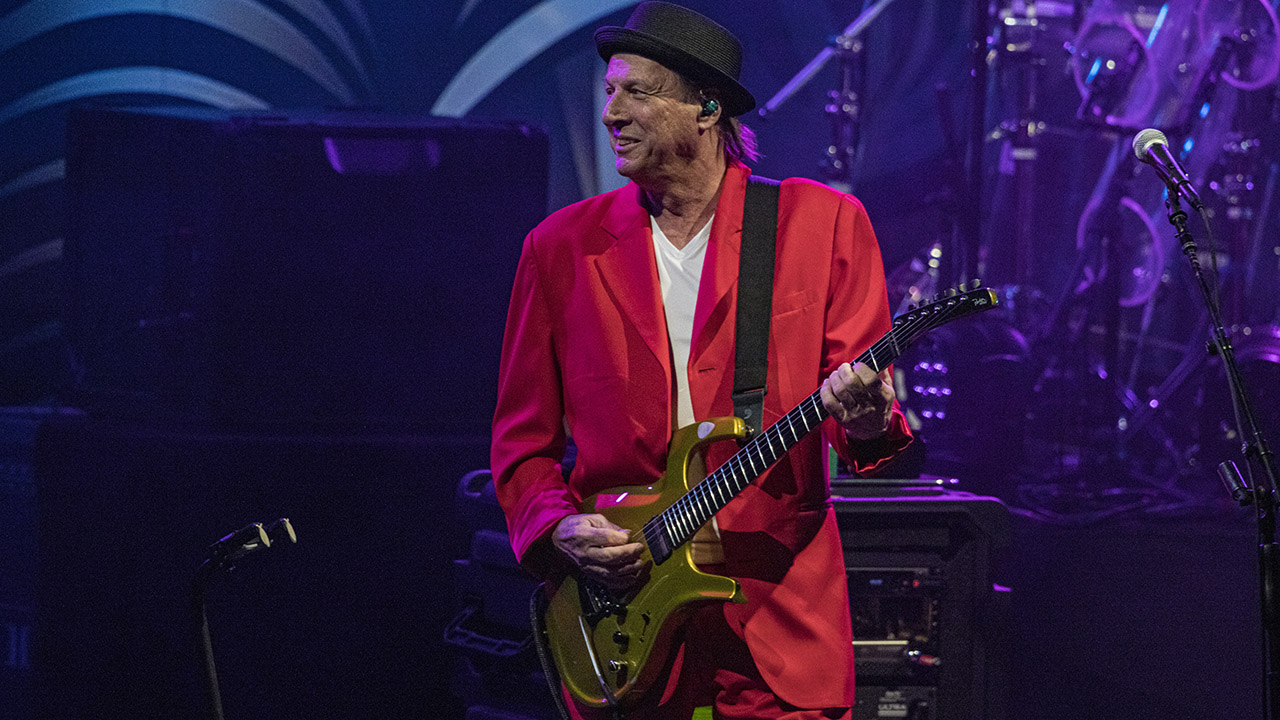
“Many times when I’m doing something it just catches my ear, and that takes me in a new direction which leads to new music and songs. Like, if you don’t have the tight, fuzzy sound on the song Big Electric Cat, you’ll never come up with the song Big Electric Cat!”
What pedal did you use for that?
“That’s a Foxx Tone Machine, a pretty underrated ’60s pedal that I found in a pile in a music store. Once I realized what it could do I did so many things with it.”
I’d like to do some tricky stuff with delays and pitches. I wrote a piece where I could play one note, get a note in harmony and get a bass note
What’s the most interesting pedal you’re currently using?
“On stage with Beat I play an Electro-Harmonix Echo Flanger. Not many people realize this, but with the five-way mode selector switch you can catch it between two modes. If you do that with the feedback turned all the way up, you can get all kinds of crazy sounds.
“You can make it sound like big, flying metal insects, or make it so that it slows things down. It’s just a monster thing – but it really wasn’t supposed to be that. It was accidental, so thanks for the accidents!”
What sounds are you looking to mess with next?
“I think I’d like to do some tricky stuff with delays and pitches. I wrote a piece a long time ago called Variations of Wave Pressure in which I could play one note, get another note in harmony and a bass note as well.
“You can come up with some really interesting things if you do that. And you’re actually not playing much if you take away the effects – you can’t play a lot because it’ll be too busy. You’re making sure the notes fit properly, which can be really great.”
- Beat will release Beat Live on September 26.



